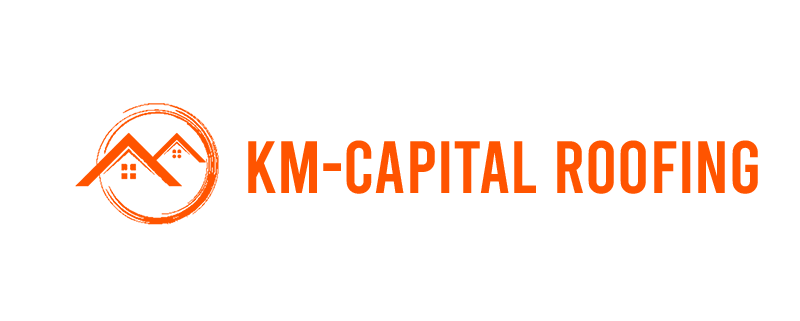The Advantages and Disadvantages of a Flat Roof
Flat Roofs provide homes with an attractive aesthetic, providing extra outdoor living space, supporting green roofs or solar panels and offering support to green roofs – but can also become vulnerable to leakage and other forms of damage.
Leaks may occur due to improper maintenance or inadequate drainage; to help minimize this risk, be sure to inspect your flat roof regularly and quickly address any problems as soon as they arise.
Installation
Flat roofs are more commonly associated with commercial buildings than homes; however, due to improvements in waterproofing technology and design for flat roofing designs, this type of roof has become an option for residential use as well. Before choosing this style of roof it is essential that homeowners understand its specific requirements and considerations before proceeding with installation.
One of the major concerns when it comes to water damage and leaks is leaks and water leakage. With no slope to work against, any holes or poorly sealed seams allow water to seep into the roof decking and insulation, leading to mold growth or rot that could ultimately create structural issues for your home.
To protect against leaks, it’s essential that your flat roof receives regular inspection. If any potential issues are detected, act quickly in repairing them before the situation becomes worse.
Apart from preventing leaks, a well-kept flat roof can offer many other advantages. For instance, its extra space could be utilized to build an outdoor space like a rooftop deck, patio, or swimming pool – providing an opportunity to take in nature without leaving home!
Flat roofs also help lower energy costs. Install solar panels on them to generate electricity. Plus, all that extra space can be utilized for passive lighting solutions like skylights and tubes – not forgetting air conditioning components!
Noteworthy is also that flat roofs can be an asset in high wind environments. Pitch roofs, which can be torn away by strong winds, can easily be destroyed; but because a flat roof has no structural attachments it is better able to resist this force and stay intact.
As with any surface, flat roofs come equipped with various materials for cover; such as asphalt and gravel (which is more popular among commercial and industrial applications) or EPDM rubber membranes. Another popular choice for flat roofing applications is Built-Up Roof (BUR), typically featuring multiple layers of felt fabric, asphalt, and tar. Though less durable than its alternatives, BURs are easily affordable and repairable. When choosing your material or contractor for this process, experience should always come into play.
Maintenance
Flat roofs require special waterproofing techniques and an appropriate pitch (sometimes known as slope) in order to prevent pooling of water and prevent it from pooling on top of them. Without the appropriate pitch, any moisture that penetrates can penetrate into the structure below and lead to interior finishes being damaged, mold growth occurring, structural issues developing or even lead to serious health complications.
At this point, it’s essential that your flat roof receives proper maintenance. This involves regular cleaning, inspections and repairs. A regular roof inspection can help detect potential problems before they turn into more serious ones; additionally a professional can test membrane integrity as well as insulation elements to assess overall roof condition.
Regularly inspect your roof surface for cracks, punctures, rips and tears. If your flat roof features a built-up system such as gravel or chipped mineral material layers for protection, check that they remain undamaged so as to not expose membrane. Keep an eye out for signs of moss or algae growth which could penetrate its surface and compromise waterproofing systems.
As part of your routine roof inspections, it’s also vital that flashings (the waterproof barriers that cover roof penetrations like vents, chimneys, skylights and drains) for signs of wear or leaks. Leaky flat roofs often go undetected for long as water seeps beneath the flashings into insulation and structures below; eventually causing mold growth or structural failure beneath. Regular inspections of your flat roof can detect such issues before costly repairs or replacement are needed.
Considering that your flat roof may be accessible, it’s advisable to install warning signs and barriers that clearly communicate any hazards of entering. This will also ensure only authorized personnel access the flat roof while following all relevant safety protocols. In addition, it is essential to establish a schedule for regular maintenance and repairs while documenting activities occurring on it.
Maintain a schedule for clearing debris from rainwater outlets (spigots, drains, gutters and downpipes). Clogged drains may lead to roof flooding which damages membranes and leads to leakage issues.
Repairs
Flat roofs may not be the most aesthetically pleasing parts of your home, but with the proper materials they can become part of its overall charm. Our expert roofing services offer restoration solutions for damaged flat roofs – let us restore them back to their former glory!
Pros of Flat Roofs
Flat roofs can provide additional living space that’s perfect for entertaining or relaxing, and many use their rooftop as an entertainment deck or patio. A well-built flat roof can even support a swimming pool allowing you to experience nature without leaving home.
Cons: Poor Drainage
Flat roofs tend to experience drainage problems more than pitched ones due to their lack of slope, as water build-up may damage roofing materials or leak into your home if allowed to accumulate on them. Therefore, regular maintenance on your flat roof is key in order to preventing these problems from developing and should always be prioritized as part of a preventive maintenance strategy.
As part of your routine inspection and cleaning schedule, you should also keep an eye out for signs of leakage or moisture intrusion into your home. If any such problems arise, it’s essential that they’re addressed quickly so as to protect both roof and home from further damage. If any such signs arise, seek professional assistance immediately in order to mitigate further damages to both.
Another potential drawback with flat roofs is that they do not perform as effectively at shedding snow and rain as pitched roofs do, leading to ice dams or standing water that could potentially cause further damage.
Fascia and Soffits Need Repair Flat Roofs
Fascia and soffits are parts of your roof which cover the ends of the rafters where they overhang from the sides of your home, providing protection for areas which cannot easily be covered with paint, as well as helping ventilation in your attic space. Repair: Fascia & Soffits for Sale
Soffits cover overhangs where roof rafters overhang on sides. Soffits play an essential part of protecting areas where paint cannot reach and providing ventilation within attic space – two critical aspects to consider for home owner safety! If your fascia and soffits have become damaged, it is essential that they be repaired quickly to prevent moisture and insects from entering your home. Our professional roofers offer fast repairs of fascias and soffits. KM Capital Roofing offers premier roofing services for both residential and commercial buildings throughout London. With years of experience installing, repairing, and replacing all types of roof systems – contact us now for more information or a free estimate!
Expertise Flat Roofs
An expert roofer possesses all of the resources needed for successful roof installation. These resources include courteous and well-trained crew members; high quality materials and tools necessary for completion; as well as knowledge about your chosen material – so you can rest easy knowing your flat roof will be built using durable solutions that stand the test of time.
Leaks, ponding water and physical damage are the three primary issues plaguing flat roofs today, so homeowners and commercial property owners must recognize them quickly in order to take immediate corrective actions. Furthermore, it’s also important that they understand which factors contribute to their occurrence.
Flat roof membranes can become damaged from UV radiation, extreme temperatures, foot traffic and debris accumulation. If this damage goes undetected for too long it could lead to water penetration that causes structural degradation, electrical problems and unhealthy mold growth on the roof itself.
Flat roof insulation type should also be an essential consideration, with certain kinds more suitable than others depending on your particular roofing system and climate conditions. Selecting appropriate flat roof insulation will save energy costs and prevent premature roof replacement costs.
Flat roofs are often designed to allow for the installation of HVAC units and other equipment, rooftop gardens, solar panels and more – providing additional square footage and functionality to residential or commercial properties.
While flat roofs provide many advantages, it is essential that you select an experienced roofing company when installing or repairing one. An experienced company will understand the unique challenges associated with them and can offer reliable yet cost-effective solutions that suit your budget and needs. They may even suggest suitable materials like EPDM, TPO or modified bitumen roof systems which offer robust waterproof solutions that will safeguard your investment.



